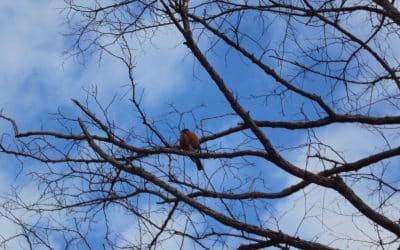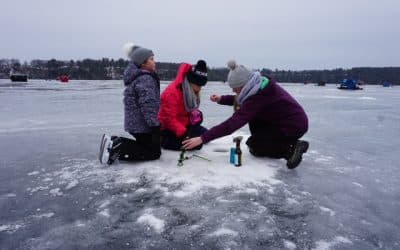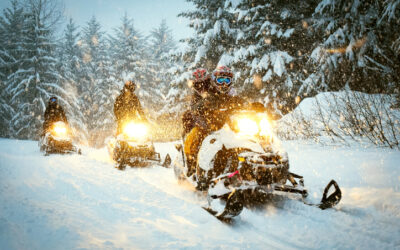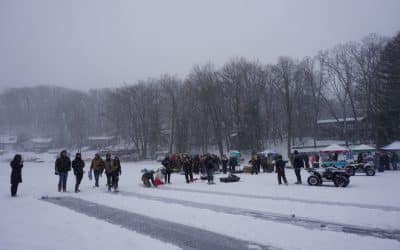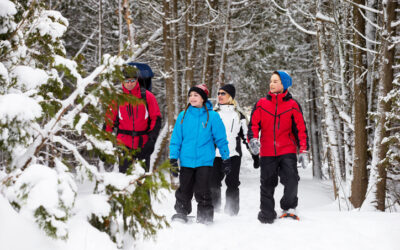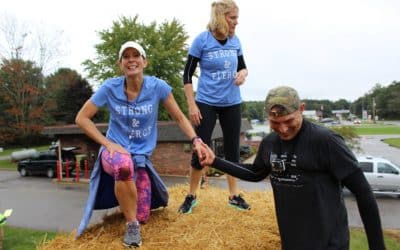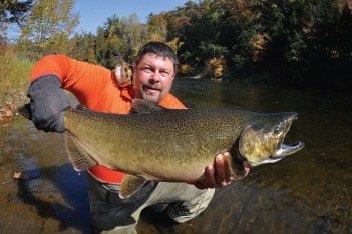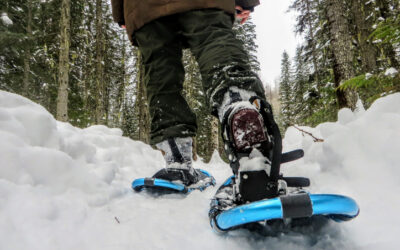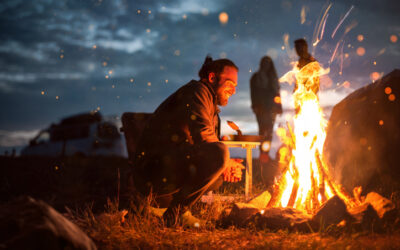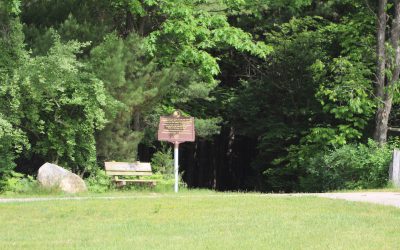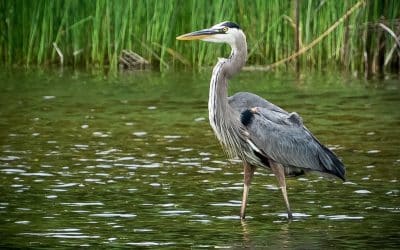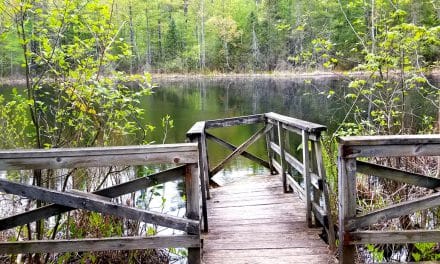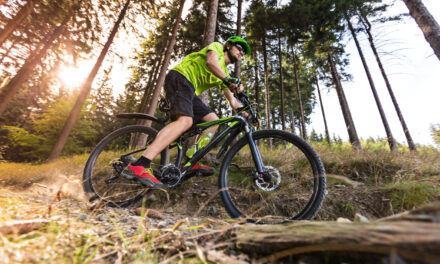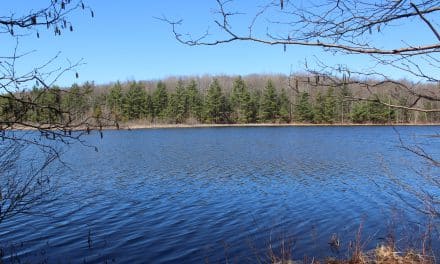By Samantha Breza
Want to do something new this winter? Try snowshoeing!
Snowshoeing is an easy sport to get into. The equipment is relatively cheap, snowshoers don’t have to register the equipment, or pay annual fees for it. Snowshoers don’t need to take classes or have special training to begin.
Traditionally snowshoes were used for getting around in snow without sinking into it with each step. They were used for hunting, trapping, collecting firewood from forests, or for doing daily chores on a farm. Using them for recreational use, such as hiking trails in the winter and competitive racing started a little over a hundred years ago, but snowshoes have been around for thousands of years. No one is entirely sure when the first snowshoes were invented, but archeologists think this happened in Central Asia around 4000 B.C. and were walked over the Bering Strait by the ancestors of modern Native Americans. The first snowshoes were most likely made of rawhide leather, wood, or bark.
Snowshoes have traditionally been made out of wood but most are made out of aluminum or plastic now. At different points in the twentieth century different manufacturers such as Tubbs and Atlas started to use aluminum to make snowshoes. There are a few differences between modern and wooden snowshoes. Modern snowshoes tend to weigh less, which means they are smaller than traditional snowshoes because they don’t need to balance out as much weight. Traditional snowshoes weaved wood across their frames whereas modern snowshoes use synthetic webbing to dispense a user’s weight. Whether they are aluminum, plastic or wood, every snowshoe has the same components. They have a board frame with webbing or lacing in it to prevent sinking into the snow. Snowshoes have turned-up tips at the front (or toe) that prevent snowshoers from getting stuck in loose snow. There are straps and a toe cord to keep feet on the snowshoes and a hole under the forefoot to let snowshoers flex their toes. Often there’s a tail at the end for extra stability.
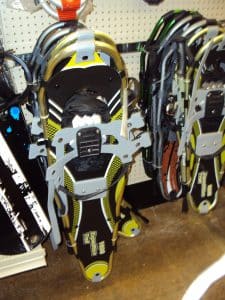
Snowshoes models come in four basic types, but are called by several names and are used for different reasons:
- The Yukon, Alaskan, Pickerel, or trail style snowshoe is oblong and usually four to five feet long and a foot wide. It has a turned-up toe and a long tail. It was made to walk on deep heavy snow over flat terrain, but can also be used to walk down steep hills on soft snow.
- The Ojibwa snowshoe was first crafted in Central Canada, which has wide-open areas that are coated in deep snow every winter. It has a long tail that points up and a pointed turn-up toe, and comes in many different sizes. Modern snowshoes come with spiky metal traction devices under the snowshoes that grip the snow.
- The Algonquin, beavertail, Maine, Michigan, or Huron snowshoe is ten to twenty inches wide and thirty to forty inches long. It has a long tail and a very flat toe and closely resembles tennis rackets.
- Bearpaw snowshoes are shaped like ovals and are mostly flat. Some newer models have a tapered tail design, a raised toe, and size adjustments so they can travel through underbrush and thickets. They have been traditionally used for going up steep hills. Sizes vary dramatically, but the popular Green Mountain bearpaw model is ten inches wide and thirty-six inches long.
Most important is that the snowshoes fit, can support the wearer’s weight (including their winter clothes and supplies), and can transverse the snow and terrain the snowshoer is on. The Algonquin and bearpaw snowshoes are best for hills and mountains, while the Yukon and Ojibwa snowshoes were made for flat land. How big the snowshoes have to be depends on the snowshoer’s weight, what they are carrying, and what kind of snow they’re going to be on (it’s easier to sink in powdery snow). Snowshoe manufacturers post this information on charts in their catalogs and websites. Retailers can also give you similar advice.
Once you have your snowshoes just put them on and walk in them. Walking in them is relatively easy. A wider stance accommodates the snowshoes best. Snowshoers shouldn’t lean backwards when descending a hill and should keep weight on their toes when they go up a hill. Turning in snowshoes required big graceful circles or U-turns. The rest involves putting one foot in front of the other.
The Snowshoes Experience by Claire Walter
Birds of Newaygo County
In Newaygo County we’re lucky to have a plethora of birds to see and hear while exploring the trails and natural outdoor spaces throughout the region. It is true that many birds don’t stay in Michigan during the winter-yet even then we have many bird species. One...
Michigan-Made Syrup
Tapping and Boiling: A (Mostly!) Spring Guide to Michigan-Made Syrup The Tap I’ll never be one to complain about the coming of spring. Every year I look forward to the snow being replaced by morning frost, warming throughout the day. I look forward to the budding of...
Success at Dam to Dam 2018
by Carmen Faulkner At sunrise, the serious contenders went out. They walked or snowshoed or rode snowmobiles. Some carried ice shanties, others stuck true to what I would consider to be the ‘old school, torturous’ tradition of sitting on buckets in the wind and cold....
Acquiring and Operating Snowmobiles
By Samantha Breza There are no places to rent a snowmobile at in Newaygo County at this time. Snowmobilers have to own a snowmobile already or purchase one at David Allen Racing Motorsports on Maple Island Road. Winter clothes and goggles can be purchased at Dunham...
Dam to Dam Ice Fishing Tournament
by Carmen Faulkner All right everyone, the winter thaw is over! The few days of warm weather and the reminders from green grass poking up from under the usual January snow was wonderful, but wintery conditions have made their way back into the forecast for the...
A Beginner’s Guide to Snowshoeing Apparel
By Samantha Breza What supplies are needed on a snowshoeing trip depends on where the snowshoer is going and how long they’re going to be there. Snowshoers hiking on mountain trails during the winter need hydration systems, avalanche transceivers, signaling mirrors,...
Are You Two Dam Tuff?
Are you Two Dam Tuff? It's a question that gets asked the first Saturday in October each and every year in Newaygo County. For those "in the know", The Croton and Hardy Dams are separated by about 6 miles as the crow flies, and are spectacular tourist draws in...
A Magical Outdoor Wonderland
The forests and rivers of Newaygo County are a magical outdoor wonderland where nature is on display year-round. The dense Huron Manistee National Forest, the rivers, lakes and streams -- all spring fed, produce some of the most amazing trout, steelhead, and salmon...
Sub 32 Degrees
One might imagine that in an area where the pursuit of outdoor activities consumes its citizenry throughout spring, summer and fall, folks might pull back in a bit in winter. A little hibernation might be I order once the snow rolls in and the waters turn to ice....
Campground Connector
The Campground Connector Trail is a 4.3-mile loop that can take local hikers from the campground through Forest Service lands where it connects with the National Trail and returns to the Campground. The hikers on the North Country Trail can take the Campground...
A Quaint Town & Country Path
Fremont has long been known as the Baby Food Capital of the World and attracts thousands of visitors to Gerber’s popular National Baby Food Festival in July. Visitors also come to enjoy Fremont’s Harvest Festival, nearby woods and lakes, and the Fremont Town...
Camp Newaygo & The Wetland Trail
On September 7th, 2024 a wildfire impacted Camp Newaygo’s beloved Wetland Trail, destroying sections of the wetland, boardwalk, and the wooden teaching platform. This trail, cherished by campers and the community, has long been a sanctuary for wildlife and a place to...
Newaygo Gets The Edge
As residents and visitors alike agree, Newaygo County has an enviable natural resource base that has to be experienced firsthand to be fully appreciated. 2014 brought the introduction of a new Newaygo County asset: The Edge! Ready to get away for an afternoon, an...

